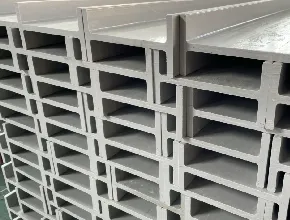loading...
- No. 9, Xingyuan South Street, Dongwaihuan Road, Zaoqiang County, Hengshui, Hebei, China
- admin@zjcomposites.com
- +86 15097380338
- Welcome to visit our website!
frp rectangular tube
Exploring the Potential of FRP Rectangular Tubes in Modern Engineering
In recent years, the demand for lightweight, durable materials in various engineering and construction applications has driven the exploration of Fiber Reinforced Polymer (FRP) materials. Among the different configurations of FRP products, rectangular tubes have gained significant attention due to their unique properties and versatility. This article delves into the features, advantages, and applications of FRP rectangular tubes, highlighting their importance in today's engineering landscape.
Understanding FRP Materials
Fiber Reinforced Polymer (FRP) is a composite material made by combining a polymer matrix with reinforcing fibers. Common fibers used in FRP include glass, carbon, and basalt. The combination of these materials results in a product that exhibits high strength-to-weight ratios, corrosion resistance, and excellent durability. These characteristics make FRP an ideal choice for applications where traditional materials like steel or concrete may fall short.
Design and Structure of FRP Rectangular Tubes
FRP rectangular tubes are designed with a hollow rectangular cross-section, providing structural integrity and strength while minimizing weight. This unique shape offers several advantages over cylindrical tubes, including greater bending stiffness and stability when used in construction. The rectangular shape allows for efficient space utilization in applications such as structural frameworks, support beams, and trusses.
The manufacturing process for FRP rectangular tubes typically involves pultrusion, a continuous manufacturing method that ensures consistent quality and performance. During pultrusion, reinforcing fibers are pulled through a resin bath and then through a heated die, resulting in the creation of a rigid and lightweight profile. This process allows for the production of custom lengths and dimensions tailored to specific project requirements.
Advantages of Using FRP Rectangular Tubes
1. Weight Reduction One of the primary benefits of FRP rectangular tubes is their lower weight compared to traditional materials. This feature not only eases transportation and handling but also reduces the load on supporting structures, making them suitable for applications in various industries, including civil engineering and aerospace.
frp rectangular tube

2. Corrosion Resistance Unlike metal components, FRP rectangular tubes do not corrode, which is particularly advantageous in environments exposed to chemicals or moisture. Their resistance to environmental degradation ensures longevity and reduced maintenance costs over time.
3. High Strength FRP materials exhibit impressive tensile and compressive strength, making them suitable for load-bearing applications. The directional nature of reinforcing fibers allows for optimizing the properties of the tubes based on the specific requirements of the application.
4. Design Flexibility The versatility in design offered by FRP rectangular tubes allows engineers and architects to innovate without being constrained by the limitations of traditional materials. Custom shapes, sizes, and performance characteristics can be achieved, enhancing the aesthetic and functional aspects of projects.
5. Thermal and Electrical Insulation FRP has inherent insulating properties, providing advantages in applications where thermal or electrical conductivity is a concern. This feature is especially valuable in industries such as telecommunications and electrical services.
Applications in Various Industries
The applications of FRP rectangular tubes span a wide range of industries, reflecting their adaptability and benefits. In construction, they are utilized for structural supports, bridges, and building facades. The transportation sector employs FRP rectangular tubes in vehicle structures, lightweight frames, and components that require resistance to both corrosion and environmental factors.
Additionally, the oil and gas industry benefits from the application of FRP materials in offshore structures, storage tanks, and pipelines due to their superior corrosion resistance. In recent years, recreational industries have also embraced FRP rectangular tubes for the construction of lightweight boating and sporting equipment.
Conclusion
The utilization of FRP rectangular tubes marks a significant advancement in the materials engineering field, offering a combination of strength, durability, and design versatility. As technology continues to progress and the demand for innovative materials grows, FRP will likely play an instrumental role in shaping the future of construction and manufacturing. With its unique properties and numerous applications, FRP rectangular tubes stand out as a transformative solution in modern engineering.
-
The Rise of FRP Profiles: Strong, Lightweight, and Built to LastNewsJul.14,2025
-
SMC Panel Tanks: A Modern Water Storage Solution for All EnvironmentsNewsJul.14,2025
-
GRP Grating: A Modern Solution for Safe and Durable Access SystemsNewsJul.14,2025
-
Galvanized Steel Water Tanks: Durable, Reliable, and Ready for UseNewsJul.14,2025
-
FRP Mini Mesh Grating: The Safer, Smarter Flooring SolutionNewsJul.14,2025
-
Exploring FRP Vessels: Durable Solutions for Modern Fluid HandlingNewsJul.14,2025
-
GRP Structures: The Future of Lightweight, High-Performance EngineeringNewsJun.20,2025
